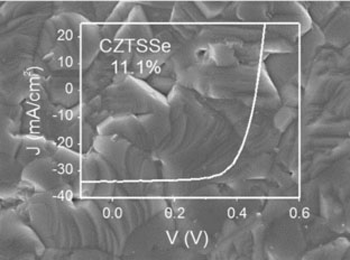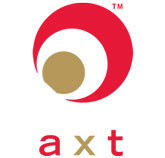- News
24 August 2012
IBM sets efficiency record for thin-film PV using earth-abundant materials
 In partnership with Tokyo-based Solar Frontier (the world’s largest manufacturer of copper indium selenium thin-film photovoltaic solar modules), Tokyo Ohka Kogyo (TOK) and DelSolar (a subsidiary of Taiwan-based Delta Electronics), the Materials Science team at IBM Research has developed an efficient and affordable photovoltaic (PV) cell made of abundant natural materials (‘Beyond 11% Efficiency: Characteristics of State-of-the-Art Cu2ZnSn(S,Se)4 Solar Cells’, Teodor K. Todorov et al, Advanced Energy Materials; DOI: 10.1002/aenm.201200348).
In partnership with Tokyo-based Solar Frontier (the world’s largest manufacturer of copper indium selenium thin-film photovoltaic solar modules), Tokyo Ohka Kogyo (TOK) and DelSolar (a subsidiary of Taiwan-based Delta Electronics), the Materials Science team at IBM Research has developed an efficient and affordable photovoltaic (PV) cell made of abundant natural materials (‘Beyond 11% Efficiency: Characteristics of State-of-the-Art Cu2ZnSn(S,Se)4 Solar Cells’, Teodor K. Todorov et al, Advanced Energy Materials; DOI: 10.1002/aenm.201200348).
Graphic: Current density versus voltage for CZTS PV cell.
Energy from the sun reaching the earth’s surface amounts to several thousand times the global consumption of electricity, IBM notes. Yet electricity from PV solar cells currently contributes significantly less than 1% of worldwide production. Of the many existing PV technologies, none so far have combined being highly efficient, cheaply scalable, and made with abundantly available materials, the firm comments.
So far, tests of the new Cu2ZnSn(S,Se)4 thin-film devices (incorporating readily available copper, zinc and tin, i.e. CZTS) have achieved a record PV solar-to-electric power conversion efficiency of 11.1% (10% better than any previous reports) for this class of semiconductors. The devices can also be manufactured by using simple ink-based techniques such as printing or casting.
Currently, incumbent crystalline silicon solar panels (in applications ranging from home electricity to the International Space Station) are abundant and highly efficient. However, they have extremely high material purity requirements (>99.9999%). Also, the wafers are typically cut from large solid ingots and wired in series to form PV modules, making the technology expensive and difficult to scale up.
Other thin-film chalcogenide materials used in PV cells, such as Cu(In,Ga)(SSe)2 (CIGS) and CdTe, have been developed to a performance level close to that of silicon, with inherently more scalable processing. Also, they are directly deposited on large-area, low-cost substrates such as glass, metal or plastic foil. However, while CIGS and CdTe are easy to integrate into buildings and consumer products, their compounds contain rare and expensive elements that increase cost and limit their manufacturing levels to less than 100 Gigawatts per year (global continuous electricity consumption is 15 Terawatts – 150 times greater than what CIGS can produce).
IBM reckons that its CZTS PV cells could yield up to 500GW/year– getting closer to the Terawatt levels of renewable electricity that the planet needs.
The firm says that the focus of the joint-development team remains to further increase device efficiency and transfer the technology to environmentally friendly, high-throughput industrial manufacturing. The hope is that, within several years, the new class of photovoltaic materials will begin to contribute to the wider availability of lower-cost solar electricity.
AQT Solar unveils prototype 60W CZTS PV module
DelSolar and IBM to jointly develop solar cell technology
IBM Thin-film PV CZTS PV cells





